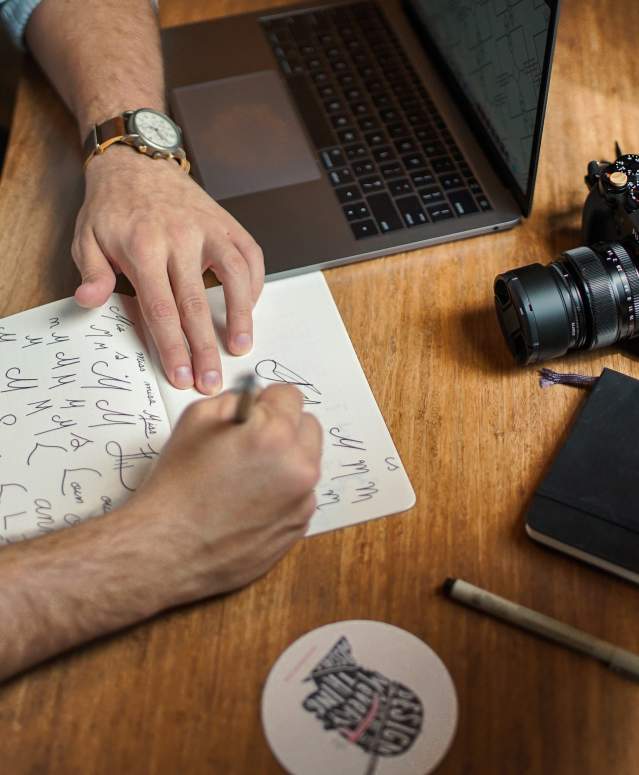Branding
Branding is the foundation of your event marketing strategy. Effective branding creates an identity that resonates with your target audience and leaves a lasting impression.
The process of branding your event includes choosing a name, designing a logo, selecting a colour palette, font style, and associated imagery, and establishing a consistent tone and style of communication for your design and marketing materials. The end goal is to ensure your event has a cohesive visual and verbal identity across all platforms. The outcomes can be recorded and communicated via a brand style guide document, for your staff and collaborators to refer to throughout the marketing of your event.
Tips:
Branding creation
- If you wish to create your event branding in-house, there are a host of resources and tools available online to assist with the branding process. View the Marketing Resources section for inspiration.
- If you would rather work with a professional but still have a close hand in your branding creation, research local design firms and freelancers. It can be very helpful to talk to a professional if you are unsure of where to start.
- Whichever option you choose for your brand creation, make sure you have a clear idea of what you want to convey to your target audience and how you wish to represent your event through visual and communicative means.
Event name
Your event name should be a representative word or phrase that is attractive and clearly understood by your target market and represents the conceptual and practical elements that make your event what it is.
- The name should give attendees a clear idea of what the event is about (e.g. ‘The Great Food Show’ for a food event).
- Avoid generic names that can easily get lost among other events.
- Keep the name short and easy to pronounce, especially if it's used in hashtags or URLs.
- Run your event name by a small focus group to ensure it resonates with your target audience.
Logo
A well-designed logo is the foundation of your event’s visual identity. It should reflect the themes, values and personality of your event and be easily adapted to different formats in both digital and print mediums.
- Icons, colour schemes and the use of fonts are important elements of creating your event logo.
- A simple, clean logo is easier to recognise and can scale to different sizes without losing quality.
- Ensure your logo works in both colour and black-and-white versions, and that it can be resized for everything from social media icons to large banners.
- Avoid generic icons or stock imagery.
- Choose design elements that represent the essence of your event (e.g. a food show may use food imagery).
Colour palette
A curated suite of complementary colours throughout your design and marketing material gives a feeling of consistency and cohesion and conveys emotive themes and a sense of aesthetic identity.
- Choose colours that reflect the mood of your event (e.g. green could represent sustainability).
- Use the same colour scheme across all marketing materials, from posters and flyers to your website and social media, to help build recognition.
- Ensure your colour combinations are easy to read, especially for digital assets like websites and social media graphics.
Fonts
Just like your logo and colour palette, your fonts should reflect the event's tone and style.
- Choose fonts that are easy to read in both digital and print formats.
- Use a maximum of two to three fonts across all marketing materials to maintain consistency (e.g. use one font for headings and another for body text).
- Your font choice should align with the event theme (e.g. a sleek, modern font might suit a corporate conference).
Visual style and imagery
The content and style of imagery you use in your design and marketing material can affect the way your target audience perceives it. Choose image content and styling that suits the feel and identity of your event.
- Use professional, high-quality images in your promotional materials. A professional photographer can capture the best moments from your event and these images can be used to market future events.
- Use simple, relevant graphics or icons to support your messaging.
- Create a style guide that outlines the specific visual elements to be used in all marketing materials including rules for using the logo, colours, fonts, and image filters or effects, to ensure consistency.
- Avoid using stock photos that don't represent your event or audience.
Tagline or slogan
A tagline or slogan sums up the essence of your event in a few memorable words. It serves as a quick, catchy summary that can be used on marketing materials and in conversations about the event.
- Keep it brief (5–7 words) – the best taglines are easy to remember and roll off the tongue.
- The tagline should give a sense of what the event offers, whether it’s fun or a unique experience.
- Tap into your audience's emotions – a good tagline might evoke excitement, curiosity, or a sense of belonging.
Physical branding
Your event branding should extend beyond digital spaces to physical items such as event tickets, merchandise, and staff apparel to help reinforce the identity of the event.
- If your event has tickets, make sure they align with the visual branding.
- Provide branded uniforms (e.g. t-shirts, hats) for staff and volunteers. This not only strengthens the brand but also helps attendees easily identify event personnel.
- Branded merchandise can act as walking advertisements for your event, especially if attendees wear or use them post-event.
- Offer branded items as giveaways to encourage attendees to engage with the brand after the event ends.
Communication tone
Your brand’s tone of voice is important when you communicate with your audience as it reflects your event's personality and values. Whether you're writing copy for a social media post, email, or website, ensure the tone is consistent and appropriate.
- Define the tone that matches your event’s vibe and keep this consistent across all communication channels.
- Use language that resonates with your target audience (e.g. a business conference might use formal, industry-specific terminology).
- Be clear and direct with your calls-to-action such as "Register Now" or "Buy Tickets" to encourage engagement.
- Develop a brand guide that includes your messaging strategy, key phrases, and tone to maintain consistency across all communications.
Useful Links:
- Vistaprint | How to create a brand style guide
- Canva | How to create a consistent brand style guide
Have you considered?
- How will your logo look in different marketing and communication mediums?
- In what ways does your branding appeal to your target audience?
- How will you communicate your Brand Style Guide to staff and collaborators?

